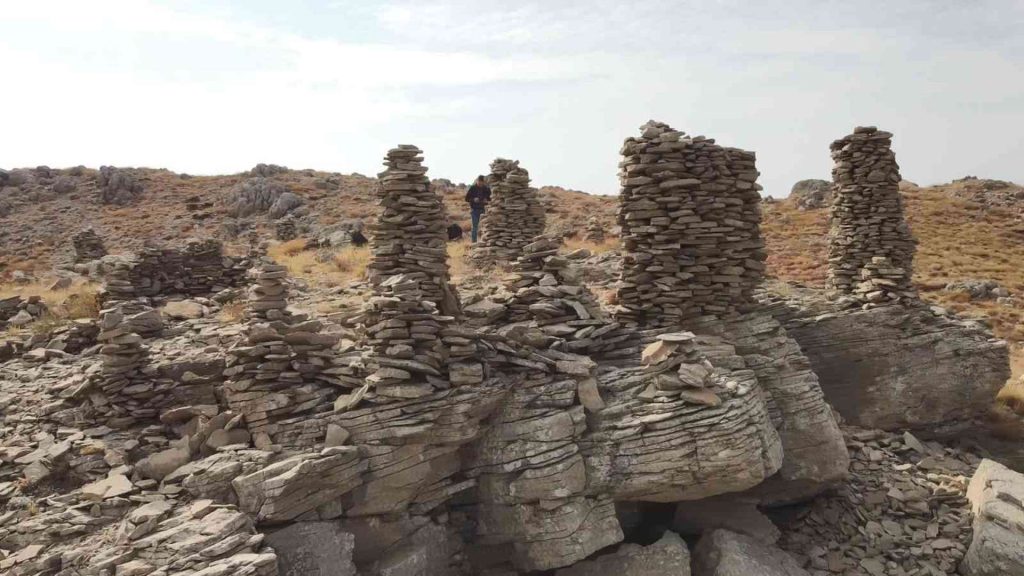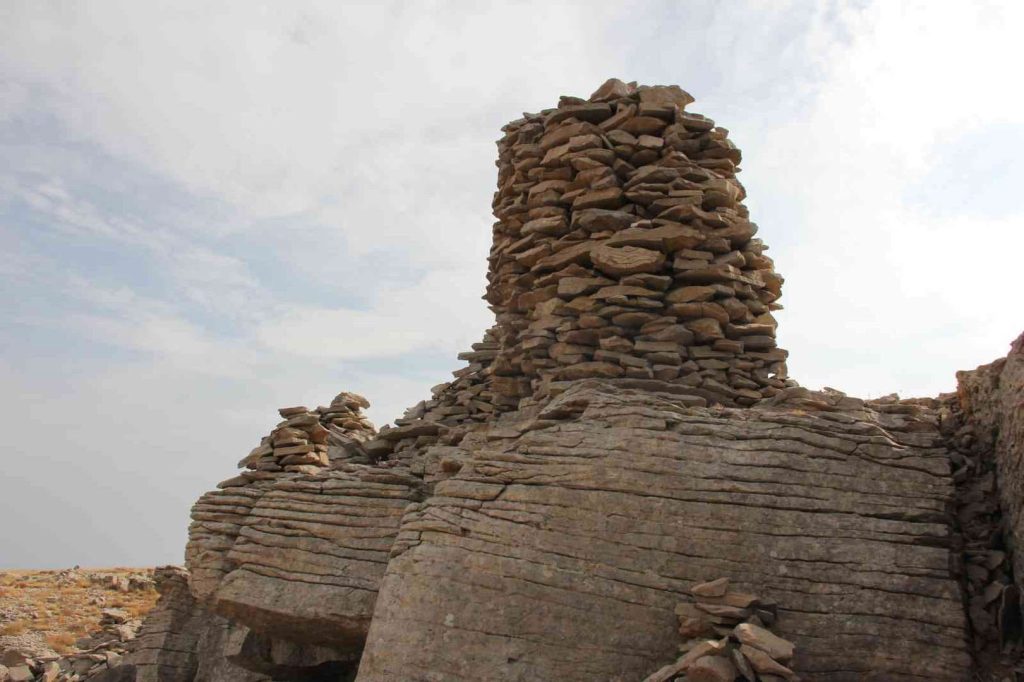
The villagers from Adıyaman found the cult area where the ‘oboo’ structures are located
In the Çet Plateau of Kürtek Mountain in the Gerger district of Adıyaman, a place that could have been used as a cult area by people since ancient times has been identified. Structures made by stacking various-sized stones, known as ‘oboo,’ ‘ovoo,’ or ‘oba,’ are considered as mounds or towers. Areas containing these structures, commonly seen in Central Asia, are considered sacred and holy. These ‘oboo’ areas, found in regions such as Muğla, Mersin, and Ankara in our country, are seen for the first time in Adıyaman.
According to the news on IHA (a Turkish news agency), a citizen named Tahir Polat Demir noticed stacked stones while going to collect sugar beets on the mountain. Demir reported the situation to the Adıyaman Museum Directorate. Adıyaman Museum Director Mehmet Alkan, along with Harran University’s Archaeology Department Lecturer Dr. Başaran Doğu Göktürk and Museum Deputy Director Mustafa Çelik, went to the place where the cult area was found. Experts examining the ‘oboo’ structures concluded that this cult area might have been in use since ancient times, but they observed that the collapsed stones were continuously replaced with new ones on top of each other.

After examining the area, Dr. Başaran Doğu Göktürk, an instructor in the Archaeology Department of Harran University, made a statement: “We are located at Kürtek Mountain, at an altitude of 2,000 meters in Gerger district. This is an area that people could perceive as a cult area since ancient times. The ‘oboo’ structures here are indicators of a tradition found in Central Asia. Our initial observations indicate that this tradition has been continued here for a long time. According to the information we’ve received, especially from the local people, these ‘oboo’ structures have been present for a long time. However, it is a known fact that these ‘oboo’ structures have been destroyed and new additions have been made on top. In the ancient Turkish tradition, ‘oboo’ structures are believed to represent the spirits of mountains, rivers, intersections of roads, and valleys. These spirits are also expressed as ‘iye.’ This is frequently encountered in Central Asia. ‘Oboo’ structures are stone heaps made at these points, signifying ‘summit’ in their essence. Looking at Kyrgyz Turkic or Tuvan Turkic, the meaning of ‘summit’ can be found. This is how we can express ‘oboo’ structures.”

Adıyaman Museum Director Mehmet Alkan stated, “As a result of a report made by a citizen, we came to the Gerger district and identified ‘oboo’ structures on the high mountains just south of Çet Plateau. These ‘oboo’ structures provide us with information on the nature of wishes or desires from ancient times to the present day. Additionally, due to being the first discovery in Adıyaman, it emerges as a very significant structure.”
You may also like
- A 1700-year-old statue of Pan unearthed during the excavations at Polyeuktos in İstanbul
- The granary was found in the ancient city of Sebaste, founded by the first Roman emperor Augustus
- Donalar Kale Kapı Rock Tomb or Donalar Rock Tomb
- Theater emerges as works continue in ancient city of Perinthos
- Urartian King Argishti’s bronze shield revealed the name of an unknown country
- The religious center of Lycia, the ancient city of Letoon
- Who were the Luwians?
- A new study brings a fresh perspective on the Anatolian origin of the Indo-European languages
- Perhaps the oldest thermal treatment center in the world, which has been in continuous use for 2000 years -Basilica Therma Roman Bath or King’s Daughter-
- The largest synagogue of the ancient world, located in the ancient city of Sardis, is being restored











Leave a Reply